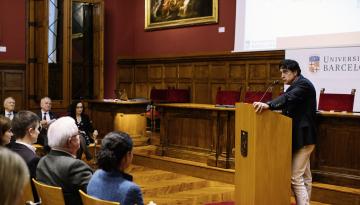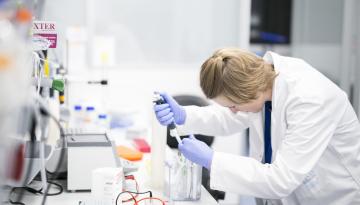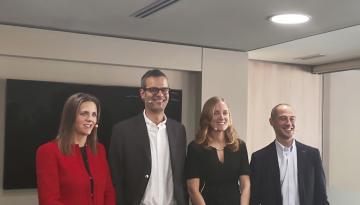It’s a joint initiative of IRB Barcelona, the Barcelona Supercomputing Center and the Centre for Genomic Regulation.
“StarLife” is funded by the Catalan Government, through the European Regional Development Fund, and by ”la Caixa” Foundation.
February 2019 marked the official presentation of “StarLife”, an informatics cluster that is housed at the Barcelona Supercomputing Center. This infrastructure is designed to give impetus and service to biomedical research of excellence and precision medicine. A joint initiative of the Institute for Research in Biomedicine (IRB Barcelona), the Barcelona Supercomputing Center – Centro Nacional de Supercomputación (BSC) and the Centre for Genomic Regulation (CRG), StarLife is funded by the Catalan Government—through the ERDF—and ”la Caixa” Foundation.
StarLife will allow the use of the most advanced computation techniques, such as those applied to detect new genes linked to cancer and rare diseases, or to simulate the behaviour of molecules and thus speed up the drug discovery process.
A leap forward thanks to continuous collaboration
StarLife has come about from collaboration between IRB Barcelona, BSC and CRG, which have been running a Joint Computational Biology Programme—that is to say the use of informatics tools in the field of biology—since 2014. This collaboration encompasses the analysis and sequencing of the genome, biomolecular modelling, and studies on the evolution and development of phylogenetic trees, etc.
"This informatics cluster marks a before and after in our research and consolidates the centres behind this initiative as international references in the field of biomedicine," said Francesc Posas, director of IRB Barcelona. "The research community at IRB Barcelona will use it to work on the molecular structure of DNA and on cancer genomics, with a particular emphasis on personalised medicine".
Luis Serrano, director of CRG, maintains that “the scale and flexibility of the new cluster will allow the scientists at the centres behind this initiative to conduct cutting-edge research”. Furthermore, “it is an infrastructure that will lend its services to researchers worldwide through the European Genome-phenome Archive (EGA), https://ega-archive.org/), the main international repository of genomic and medical data on human diseases,” he concluded.
A flexible system that complements the MareNostrum supercomputer
StarLife is a computational and storage system with a calculation power of 132.8 Teraflops (133 trillion operations per second), a storage capacity of 9.5 Petabytes (10 million Gigabytes) and a central memory (RAM) of 9.1 Terabytes (9,100 Gigabytes).
“It’s main feature is its reconfigurable architecture, which can be adapted to the different needs of approaches related to biomedicine, including high performance computing, cloud operations and big data analysis,” explains Sergi Girona, Operations Director at BSC.
StarLife has cost €1.72 M, 43% of which was provided by the Catalan Government (through the ERDF), 22% by ”la Caixa” Foundation and the remaining 35% from a joint investment made by IRB Barcelona, BSC and CRG.
Francesc Xavier Grau, Secretary for Universities and Research of the Catalan Government said, "This infrastructure, which has been set up thanks to the collaboration of key stakeholders in our knowledge system and to the Catalan Government—through European and private funding—is the response to a growing need. That of managing the data produced by biomedical research in order to achieve an effective impact on public health. As a leader in biomedical research, Catalonia has to be prepared to in order to ensure that the clinical and healthcare opportunities of personalised medicine become a reality”.
Jaume Giró, Director General of the “la Caixa” Foundation said that “it’s an example of a public-private initiative that seeks to strengthen international research of excellence with the aim to improve people’s quality of life and one to which we are proud to contribute. Research is one of the priority lines set out in the “la Caixa” Foundation’s strategic plan, to which we devoted €90 M”.


